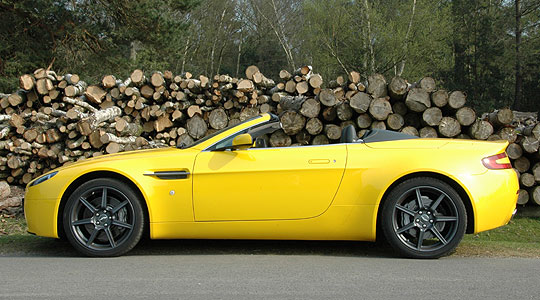
The latest Roadster from Aston Martin turns normal pre-conceptions of coupé-based cabriolets upside down; it’s a hard-driving sports car that equals the highly acclaimed original V8 in every single category. And to underline its sporting credentials, Astons have used it to debut the Sportshift automated manual transmission that features super-swift no-clutch ‘paddle’ changes, an Auto Drive mode for traffic, and a ‘crawl’ facility to facilitate better low-speed manoeuvring.
Launched to the world’s press in the South of France earlier this month, your Editor was able to drive one of the LHD launch cars - finished in a new optional colour ‘Sunburst Yellow’ - in real world conditions over an unusually sunny British spring weekend.
The V8 Vantage needs no introduction to regular readers of Classic Driver. For the money, in our opinion, it’s the best new bespoke supercar you can buy. We’ve driven it down to Goodwood, and we’ve done a good stint in the ’30,000 mile car’ to Scotland and back in a day last autumn - both memorable experiences.
For style, presence, image, handling and performance it’s the one to have, with 380 very useable horsepower under your right foot and one of the badges on the bonnet.
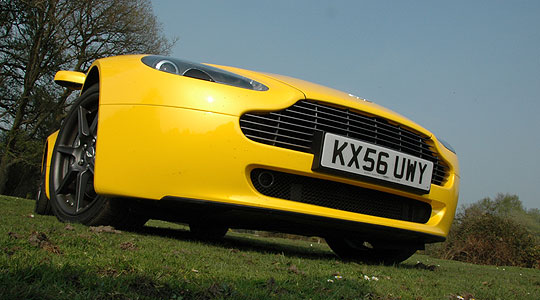
Of course fundamental to all the Gaydon-era Astons is the all-alloy VH (Vertical-Horizontal) architecture, the very stiff yet adaptable-format chassis structure that enables Aston Martin to make the regular chassis DB9, abbreviated V8 and longer wheelbase Rapide. Cutting off the roof of a coupé to make a cabriolet, by definition, compromises its structural integrity - instead of a having a fully triangulated section from windscreen to door pillar, there’s now nothing but fresh air or a length of mohair and canvas. The result is an ability to twist, thus spoiling the potential for optimum suspension tuning, and the consequent adoption of less focused ‘softer’ suspension.
Don’t believe all you read in the motoring mags though, the days of truly wobbly open cars are long gone and in real world driving at 21st century (rigidly enforced) speeds the effect is only slightly discernable. And anyway, aren’t cabriolets supposed to be luxurious cruisers more sorted to posing than performing?
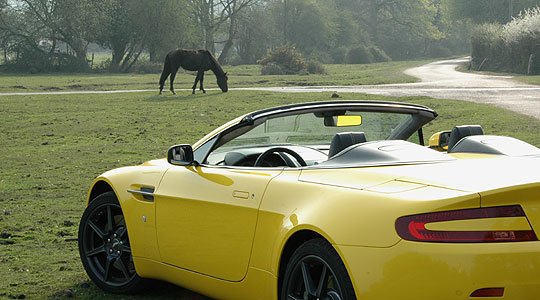
Try telling that to Dr Bez and the engineering team at Gaydon. The V8 coupé is such a strong act in the handling stakes it would have been criminal for the car’s raison d'être to have been compromised one degree of twist in the conversion. An additional strengthening beam located behind the dash nearly makes up for the lack of roof, and although in the lab the open car loses a little in torsional stiffness, the reality on the pot-holed roads of southern England is a car driving with exactly the same poise as the coupé. A tremendous achievement, and the team didn’t stop there, adding stiffer suspension than before to heighten the driving experience yet further - another statement of faith in the chassis.
The result is a very well balanced car that is a genuine alternative to the coupé. The steering seems lighter, possibly as a result of the revised springing and no better or worse, just ‘different’, while the car's ability to go round corners very fast indeed is matched by a nice mile-covering lope sub-4000 rpm in 6th, and an easy transformation to town car with its excellent visibilty hood-down (and better than many roof-up).
Externally, the designers have maintained the elegantly sculpted side profile debuted by the DB9 Volante, the smaller car appearing ‘boxier’ and more aggressive yet still finely drawn. The fabric hood is all-electric and can be operated at speeds up to 50 km/h (30 mph), and when erected it gives a comfortably cosy cockpit suitable for a six-footer. The latest version of the V8’s seats are superb both in comfort and support, it just takes a little while to set the steering wheel/squab/seat back to exactly the right position (squab low and horizontal, wheel towards you and seat angled back in my case) and then memorised in the optional (£295) memory seats.
The few areas of complaint from the regular V8 are carried over to the Roadster (little interior storage/hard-to-read instrumentation), but the fabric roof means that unlike metal-top cabrios, the new Aston has something of a boot (144 litres vs 300 litres for the V8 Vantage and 186 for the DB9 coupés).
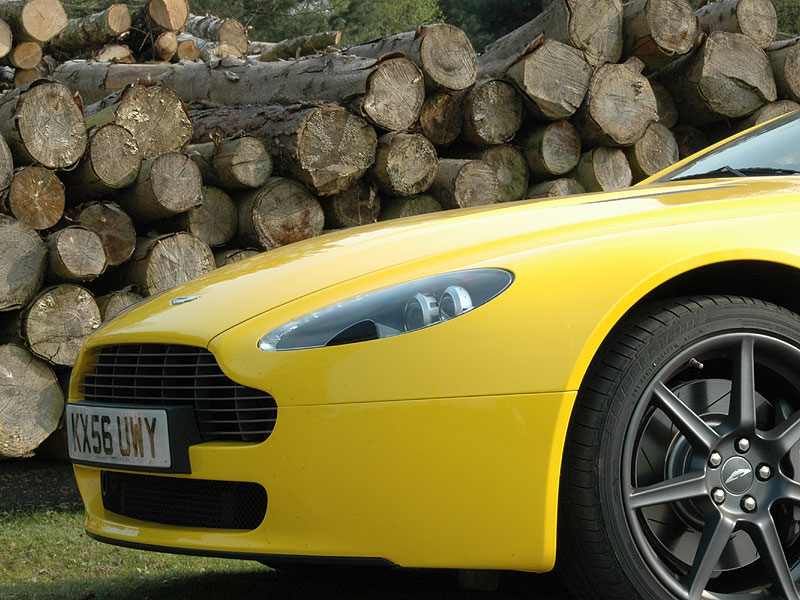
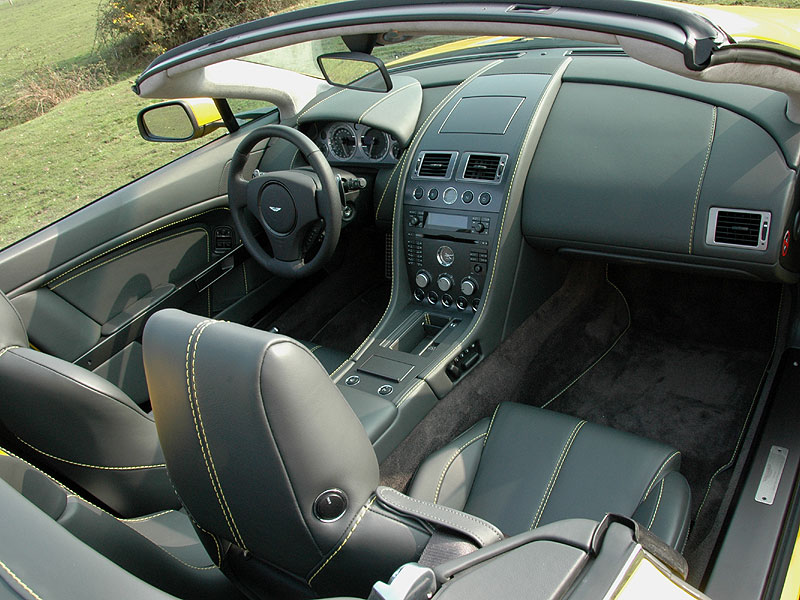
And the new Sportshift frees up a vital few square inches for mobile phone storage on the transmission tunnel. Ah, the new Sportshift, the semi-automatic transmission that uses the existing Graziano six-speed ‘box, but instead of a clutch pedal the steering wheel-mounted paddles do the work for you; clicking on '+' changes up, '-' changes down, with the revs of the engine matched to road speed and the car defaulting to 1st at standstill. There’s also a ‘crawl’ feature that allows the Roadster to move under its own steam for low-speed toing and froing, as well as endowing it with an intangible feeling of ‘heft’ and ‘solidity’ pulling away from standstill. It’s difficult to describe unless you’ve driven a similarly-equipped Ferrari or Maserati, but trust me Astons have got it just right.
The car defaults to a sporty mode that means in ‘manual’ full (7300 rpm) revs can be held in any gear without it automatically changing up (there’s a Comfort setting too, for more relaxed progress), while changing down means the engine is ‘blipped’ to match road speed, although don’t expect the howling and wailing of a F430 (our test car didn’t do that anyway). Changes are hard and tough, not seamless but top-down well suit the V8’s blasting ‘Bullit’ soundtrack, and ones you can smooth with judicious footwork in more mellow moments.
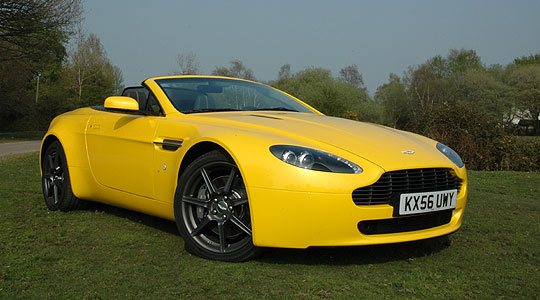
It’s an ‘automated manual’ - Aston Martin is careful to avoid using the word automatic - so when you press the ‘D’ button the car’s electronics take over, and you know something? It’s pretty good, so much so that a journey with which British readers will be familiar (the M25 London Orbital at 11.00 on a sunny end-of-holiday Saturday) can be easily accomplished, clutch-leg muscles unused. The up-changes drag slightly, while going down is smoother, with little bangs and pops on over-run.
It’s light years away from early Vanquish (and equivalent) gearboxes. Don’t be influenced by the road testers, ask your dealer for a proper test-drive (remember it’s available in the coupé too) before you decide. There are pros and cons for both, and let’s face it, semi-automatic is going to be the way to go in the future, with all the racing GT cars featuring either paddle or stick sequential gearboxes.
26 deg C sunshine, an open road and a brand new Aston Martin V8 Vantage Roadster at your disposal - St Tropez here we come...
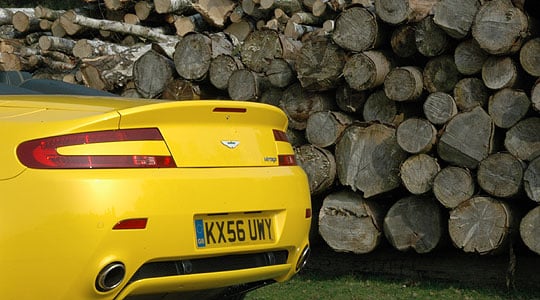
The Aston Martin V8 Vantage Roadster with manual 6-speed gearbox is available in the UK at prices starting at £91,000. The Sportshift transmission (also available on the coupé) costs £3,000.
The test car was finished in Sunburst Yellow (£995), with interior upper and lower environment in Phantom Grey leather with yellow, coarse stitching (£145). The hood colour was Titan Grey (£495), and the optional (£995) 19’’ seven spoke alloy wheels were finished in anthracite.
Other options fitted included; wind deflector (£395), Aston Martin Premium Audio System (700W) (£995), dual stage heated seats (£295), memory seats (£295) and satellite navigation with TMC (£1,750).
Text: Steve Wakefield
Photos: Classic Driver
ClassicInside - The Classic Driver Newsletter
Free Subscription!







